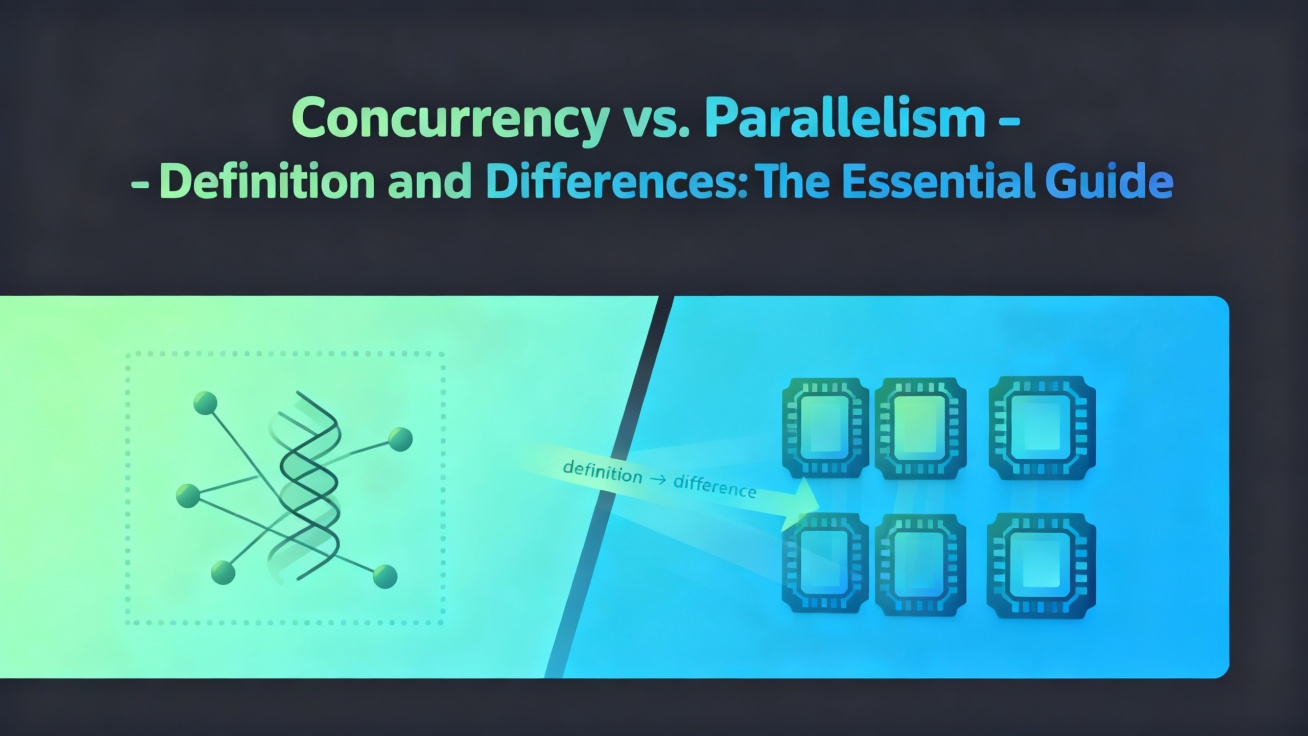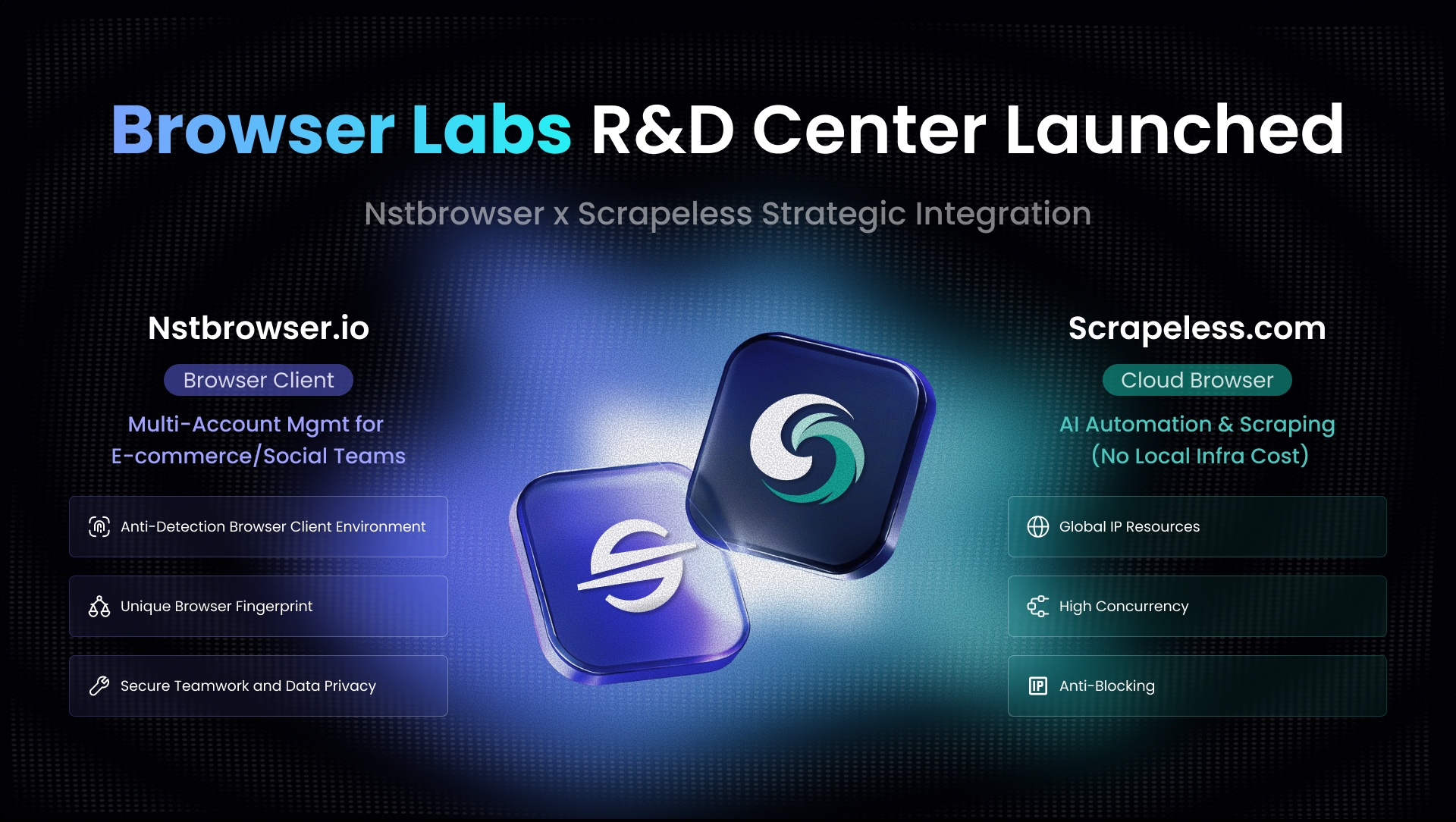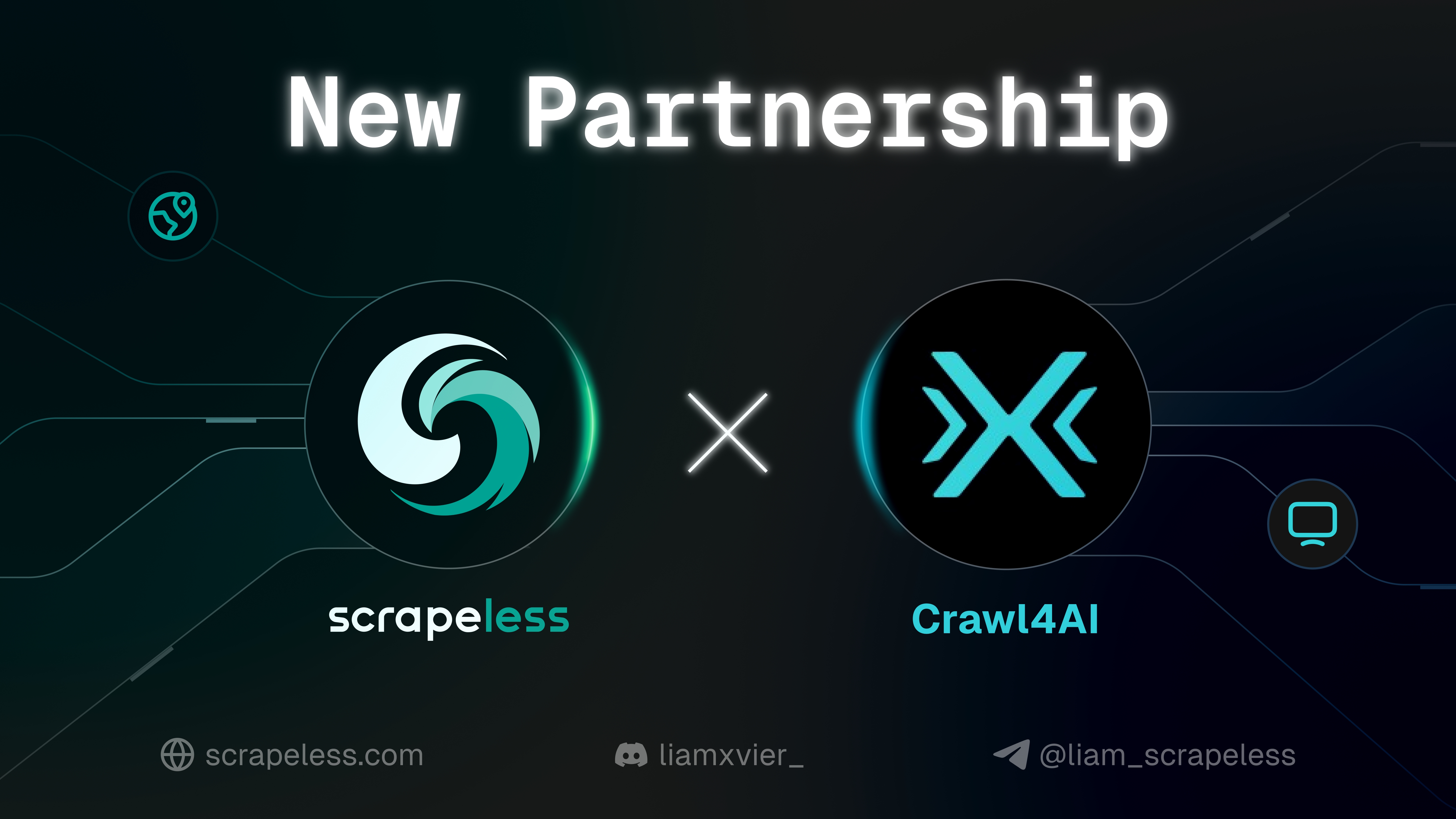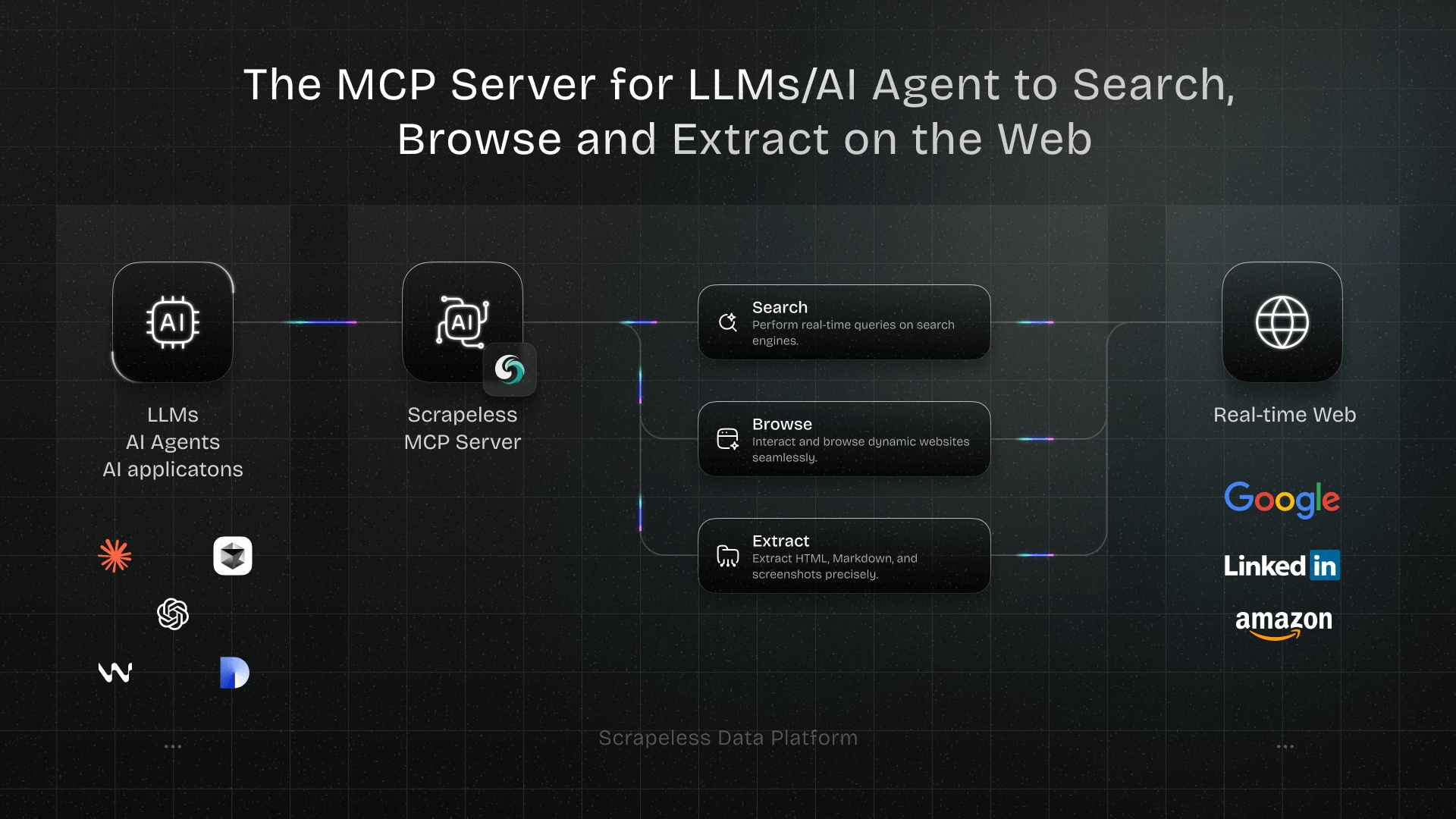Concurrency vs. Parallelism – Definition and Differences: The Essential Guide
Advanced Data Extraction Specialist
In modern computing, the terms concurrency and parallelism are often used interchangeably, yet they represent distinct concepts crucial for efficient software design. Understanding their fundamental differences is vital for optimizing performance and building responsive applications. Concurrency involves managing multiple tasks at once, giving the appearance of simultaneous execution, while parallelism focuses on truly executing multiple tasks simultaneously. For developers working with web scraping and browser automation, these concepts are particularly relevant when dealing with numerous requests and data processing. Scrapeless Browser offers an advanced solution that inherently leverages both concurrency and parallelism, providing an out-of-the-box environment for high-performance, scalable automation tasks.
This guide will define concurrency and parallelism, explore their underlying models, highlight their key differences, and illustrate how they are applied in real-world scenarios. We will also examine how these concepts can be combined to achieve superior performance and how platforms like Scrapeless Browser simplify their implementation for complex automation challenges.
What is Concurrency?
Concurrency refers to the ability of a system to manage multiple tasks within overlapping time periods [1]. It does not necessarily mean these tasks are executing at the exact same instant. Instead, concurrency is about structuring a program to handle multiple operations by interleaving their execution, often on a single processor core. The system rapidly switches between tasks, giving the illusion that they are running simultaneously.
The Single Chef Analogy
Consider a single chef preparing multiple dishes in a kitchen. The chef might chop vegetables for one dish, then stir a sauce for another, and then return to the first dish. From an observer's perspective, it appears multiple dishes are being prepared "at once." In reality, the chef performs one action at a time in rapid succession, managing the progress of each dish without truly working on them simultaneously [1]. This scenario perfectly illustrates concurrency: tasks are managed over overlapping timeframes, but execution is interleaved.
Different Concurrency Models
Various models facilitate concurrent execution, each with its own approach to managing tasks and resources.
Cooperative Multitasking
In cooperative multitasking, tasks voluntarily yield control to the operating system or scheduler [2]. Each task runs until it decides to pause and allow another task to execute. This model relies on the good behavior of all programs; if one task fails to yield control, it can monopolize the CPU and freeze the entire system. Early operating systems often used this approach.
Preemptive Multitasking
Preemptive multitasking is a more robust model where the operating system or scheduler has the authority to interrupt a running task and switch to another [3]. This interruption, or preemption, happens without the task's cooperation. The scheduler allocates CPU time slices to each task, ensuring fair distribution of resources and preventing a single task from dominating the processor. Modern operating systems widely adopt this model for its stability and responsiveness.
Event-Driven Concurrency
Event-driven concurrency is a model where tasks are executed in response to specific events, such as user input, network requests, or timer expirations. An event loop continuously monitors for events and dispatches them to appropriate handlers. This model is highly efficient for I/O-bound operations, as tasks can initiate an operation (e.g., a network request) and then yield control while waiting for the operation to complete, allowing other tasks to run. Node.js is a prominent example of a platform built around an event-driven, non-blocking I/O model.
Actor Model
The Actor model is a concurrency paradigm that treats "actors" as the universal primitives of concurrent computation. Each actor is an independent computational entity that can receive messages, make local decisions, create more actors, and send messages to other actors [4]. Actors communicate exclusively through asynchronous message passing, never sharing memory directly. This isolation simplifies reasoning about concurrent behavior and avoids common concurrency issues like race conditions. Erlang and Akka (Scala/Java) are popular implementations of the Actor model.
Reactive Programming
Reactive programming is an asynchronous programming paradigm focused on data streams and the propagation of change. It involves observing and reacting to events or data changes over time. Libraries like RxJava, RxJS, and Project Reactor provide tools to compose asynchronous and event-based programs using observable sequences. This model is particularly effective for building responsive applications that handle real-time data updates and user interactions seamlessly.
What is Parallelism?
Parallelism involves the simultaneous execution of multiple tasks or sub-tasks [1]. Unlike concurrency, which can be achieved on a single processor through interleaving, parallelism inherently requires multiple processing units (e.g., multi-core CPUs, GPUs, distributed systems) to perform computations at the exact same time. The goal of parallelism is to reduce the total execution time of a program by dividing the workload and processing different parts concurrently.
The Multiple Chefs Analogy
Imagine a kitchen with multiple chefs, each working on different dishes simultaneously. One chef prepares the appetizer, another works on the main course, and a third handles dessert. Here, true simultaneous work is happening across multiple workers, leading to all dishes being completed faster than if a single chef were to prepare them sequentially [1]. This demonstrates parallelism, where distinct tasks are executed at the same physical instant.
Different Parallelism Models
Parallelism can be implemented through various architectural and programming models.
Bit-level Parallelism
Bit-level parallelism increases processor word size, allowing a single instruction to operate on larger chunks of data simultaneously. For example, a 64-bit processor can process 64 bits of data in one clock cycle, whereas a 32-bit processor would require two cycles for the same amount of data. This form of parallelism is fundamental to modern CPU design.
Instruction-level Parallelism (ILP)
Instruction-level parallelism allows a processor to execute multiple instructions from a single program simultaneously. Techniques like pipelining and superscalar execution enable CPUs to fetch, decode, execute, and write back results for several instructions in parallel. Compilers often play a role in optimizing code for ILP by reordering instructions.
Data Parallelism
Data parallelism focuses on performing the same operation on different subsets of data simultaneously. This model is highly effective when dealing with large datasets where the same computation needs to be applied to many elements. Graphics processing units (GPUs) are prime examples of hardware designed for data parallelism, executing thousands of identical operations on different pixels or vertices concurrently. MapReduce frameworks also embody data parallelism.
Task Parallelism
Task parallelism involves distributing different tasks (or independent sub-tasks of a larger problem) across multiple processing units. Each processor executes a different task concurrently. For instance, in a complex simulation, one processor might handle physics calculations, another might manage rendering, and a third might process user input. This model is common in multi-threaded applications and distributed computing.
Distributed Memory Parallelism
In distributed memory parallelism, each processing unit has its own private memory, and communication between units occurs by explicitly passing messages. This model is typical in clusters of computers where each node has its own CPU and memory. Message Passing Interface (MPI) is a widely used standard for programming distributed memory systems.
Shared Memory Parallelism
Shared memory parallelism involves multiple processing units accessing a common, shared memory space. Communication is implicit; processors can read from and write to shared memory locations. This model is common in multi-core processors where different cores can access the same RAM. OpenMP is a popular API for shared memory programming.
Concurrency vs. Parallelism: Key Differences
The distinction between concurrency and parallelism is subtle yet critical for software architects and developers. While both aim to improve system efficiency, they achieve it through different mechanisms.
| Feature | Concurrency | Parallelism |
|---|---|---|
| Goal | Manage multiple tasks at once (progress on multiple tasks) | Execute multiple tasks simultaneously (speed up execution) |
| Execution | Interleaved execution (tasks take turns) | Simultaneous execution (tasks run at the exact same time) |
| Hardware | Can be achieved on a single CPU core | Requires multiple CPU cores or processing units |
| Focus | Dealing with many things at once | Doing many things at once |
| Example | Single chef juggling multiple dishes | Multiple chefs each cooking a different dish |
| Complexity | Managing task switching, synchronization | Distributing workload, managing communication |
Concurrency is about structure, enabling a system to handle multiple tasks gracefully over time. Parallelism is about execution, making computations faster by performing them truly simultaneously. A system can be concurrent without being parallel (e.g., a single-core CPU running multiple threads), and it can be parallel without being concurrent (e.g., a GPU performing a single operation on a massive dataset). Most modern systems are designed to leverage both.
Can We Use Concurrency and Parallelism Simultaneously?
Absolutely. In fact, combining concurrency and parallelism is how most high-performance and responsive systems are built today. Modern software often uses concurrent programming models to manage a large number of tasks, and then uses parallel execution to run those tasks simultaneously on multi-core processors or distributed systems.
For example, an application might use an event-driven concurrent model to handle incoming network requests efficiently. When a computationally intensive task arises from one of these requests, it can then be offloaded to a separate thread or process that executes in parallel on another CPU core. This hybrid approach allows the system to remain responsive (concurrency) while also performing heavy computations quickly (parallelism).
Concurrency and Parallelism Combined: Real-World Examples
The synergy between concurrency and parallelism is evident in numerous real-world applications, especially in areas requiring high throughput and responsiveness.
Web Servers
Modern web servers (like Nginx or Apache) are excellent examples. They use concurrency (often event-driven or multi-threaded) to handle thousands of client requests simultaneously. Each incoming request is a task. If a request involves a heavy database query or file operation, that specific task might be executed in parallel on a separate thread or process, leveraging multiple CPU cores. This ensures the server remains responsive to new requests while complex operations are being processed in the background.
Data Processing Pipelines
Big data processing frameworks (e.g., Apache Spark, Hadoop) extensively use both concepts. A data pipeline might be designed concurrently, where different stages (data ingestion, transformation, analysis, storage) are managed independently. Within each stage, operations are often parallelized across a cluster of machines. For instance, a data transformation step might process different chunks of data in parallel across multiple worker nodes, significantly speeding up the overall pipeline execution.
Browser Automation and Web Scraping
In browser automation and web scraping, concurrency and parallelism are crucial for efficiency. A web scraper might need to visit thousands of pages. Concurrency allows the scraper to manage multiple page requests without waiting for each one to complete sequentially. For example, it can initiate a request for page A, then page B, and then page C, processing responses as they arrive. If the scraping task involves complex rendering or JavaScript execution (like with headless browsers), parallelism can be employed by running multiple headless browser instances simultaneously on different CPU cores or even distributed across multiple machines. This significantly reduces the total time required to scrape large volumes of data.
Scrapeless Browser is an exemplary tool that embodies this combined approach. It offers:
- Unlimited Concurrent Scaling: Scrapeless Browser allows for launching hundreds or thousands of browser instances concurrently, managing them efficiently without server resource limitations. This is achieved through its architecture that handles task switching and resource allocation seamlessly.
- Parallel Execution on Edge Nodes: Leveraging global edge service nodes, Scrapeless Browser can execute these concurrent tasks in parallel across distributed infrastructure. This means that while your application manages concurrent requests, the actual browser rendering and anti-bot bypass operations are performed simultaneously on Scrapeless's optimized cloud environment, ensuring rapid startup speeds and stability.
- Intelligent Anti-Detection: Scrapeless Browser integrates real-time handling for reCAPTCHA, Cloudflare Turnstile/Challenge, and AWS WAF. This functionality is often parallelized, with specialized modules working simultaneously to bypass different detection mechanisms, ensuring high success rates.
By providing an out-of-the-box solution that handles the complexities of both concurrency and parallelism, Scrapeless Browser empowers developers to build highly scalable and robust web scraping and automation solutions without deep expertise in distributed systems or concurrent programming models.
Conclusion
Concurrency and parallelism are foundational concepts in computer science, each offering distinct advantages for system design and performance. Concurrency is about efficiently managing multiple tasks over time, while parallelism is about executing multiple tasks truly simultaneously. Understanding their nuances allows developers to create more responsive, efficient, and scalable applications.
Modern applications, especially in data-intensive fields like web scraping and automation, greatly benefit from combining these approaches. While implementing robust concurrent and parallel systems can be challenging, platforms like Scrapeless Browser simplify this complexity. By offering an integrated solution that inherently manages both concurrent task handling and parallel execution across a global infrastructure, Scrapeless Browser provides an unparalleled advantage for overcoming challenges like anti-bot measures and achieving high-volume data extraction. For anyone seeking to optimize their automation workflows in 2025, embracing such powerful, all-in-one tools is crucial.
Key Takeaways
- Concurrency manages multiple tasks over overlapping time periods, giving the appearance of simultaneous execution (e.g., a single CPU core switching between tasks).
- Parallelism involves the true simultaneous execution of multiple tasks, requiring multiple processing units (e.g., multi-core CPUs).
- Different concurrency models include cooperative multitasking, preemptive multitasking, event-driven concurrency, Actor model, and reactive programming.
- Different parallelism models include bit-level, instruction-level, data, task, distributed memory, and shared memory parallelism.
- Combining concurrency and parallelism is essential for building high-performance, responsive, and scalable systems.
- Scrapeless Browser leverages both concepts to offer an advanced, managed solution for web scraping and browser automation, providing unlimited concurrent scaling and parallel execution for anti-detection and task processing.
Frequently Asked Questions (FAQs)
Q1: What is the main difference between concurrency and parallelism?
A1: Concurrency is about dealing with many things at once by managing tasks over overlapping time periods, often on a single processor. Parallelism is about doing many things at once by executing tasks simultaneously on multiple processing units.
Q2: Can a single-core processor achieve concurrency?
A2: Yes, a single-core processor can achieve concurrency through techniques like time-slicing and context switching, where the processor rapidly switches between different tasks, giving the illusion of simultaneous execution.
Q3: Why are both concurrency and parallelism important for web scraping?
A3: Both are important for web scraping to maximize efficiency. Concurrency allows a scraper to manage multiple requests or page navigations without waiting for each to complete sequentially. Parallelism enables true simultaneous processing of multiple pages or browser instances on different cores, significantly speeding up large-scale data extraction.
Q4: What is an example of a concurrency model?
A4: An example of a concurrency model is event-driven concurrency, where a system processes tasks in response to events (like network requests) through an event loop, allowing it to handle many operations without blocking.
Q5: How does Scrapeless Browser utilize concurrency and parallelism?
A5: Scrapeless Browser uses concurrency to manage a large number of browser automation tasks efficiently, allowing them to progress over overlapping timeframes. It utilizes parallelism by executing these tasks simultaneously across its global network of edge nodes and multiple processing units, ensuring high speed, scalability, and effective anti-detection capabilities.
References
At Scrapeless, we only access publicly available data while strictly complying with applicable laws, regulations, and website privacy policies. The content in this blog is for demonstration purposes only and does not involve any illegal or infringing activities. We make no guarantees and disclaim all liability for the use of information from this blog or third-party links. Before engaging in any scraping activities, consult your legal advisor and review the target website's terms of service or obtain the necessary permissions.



